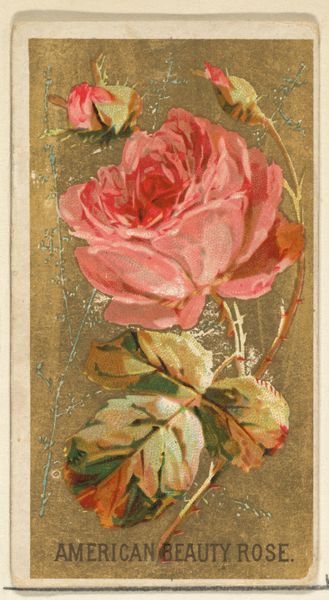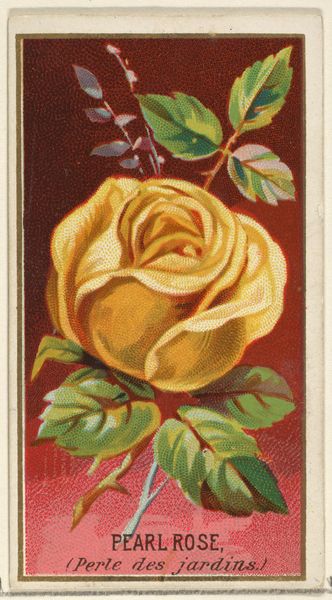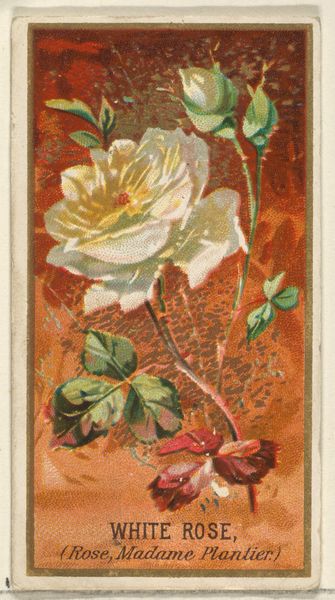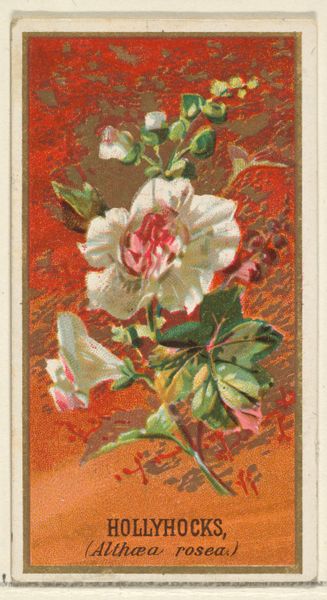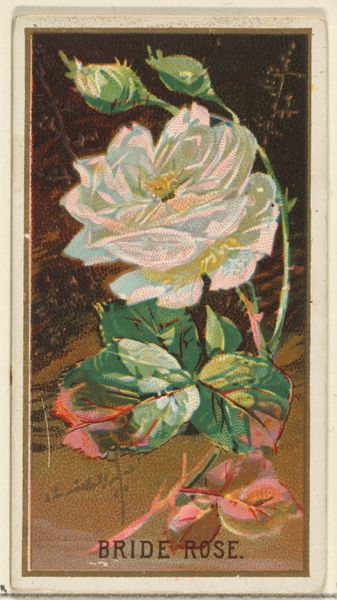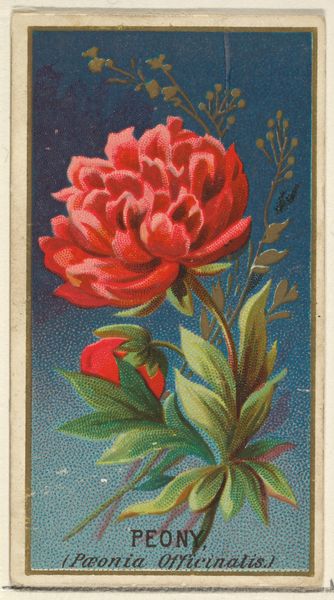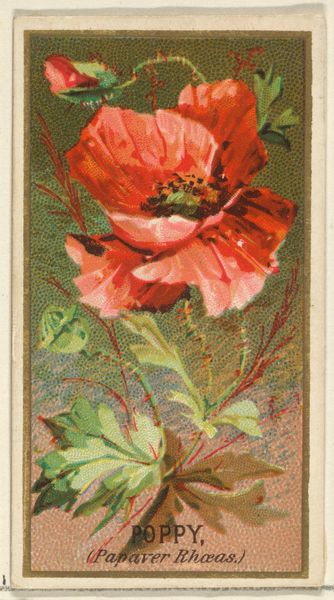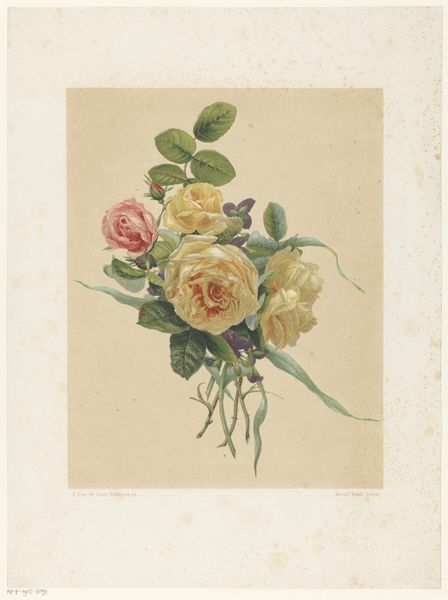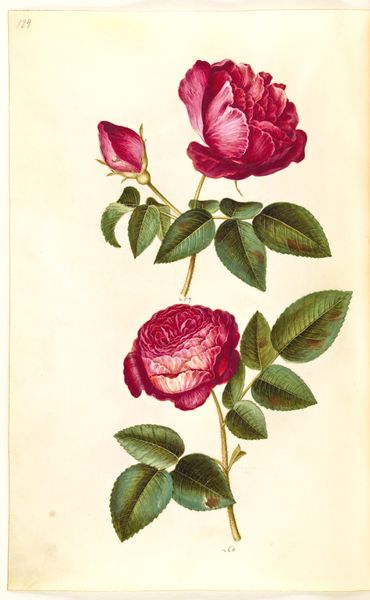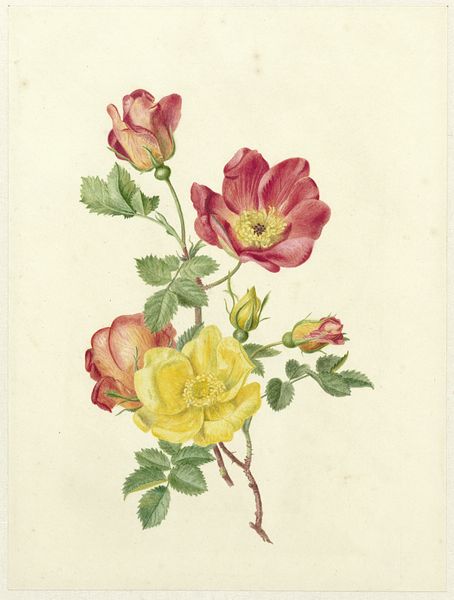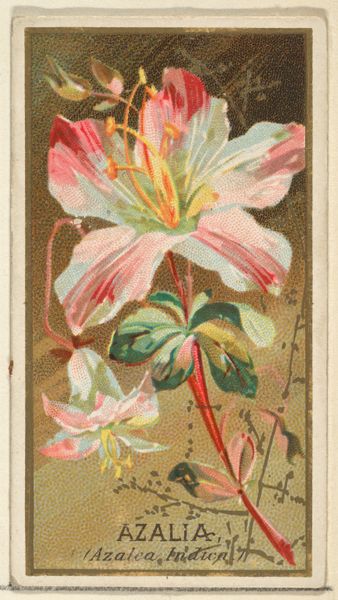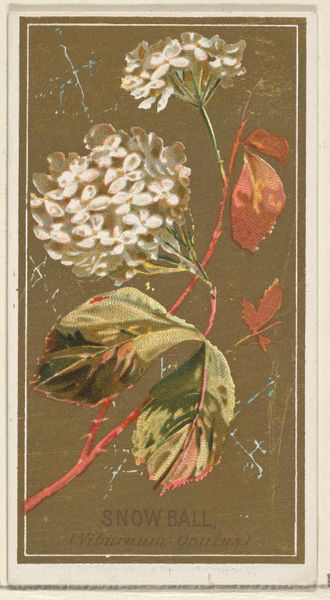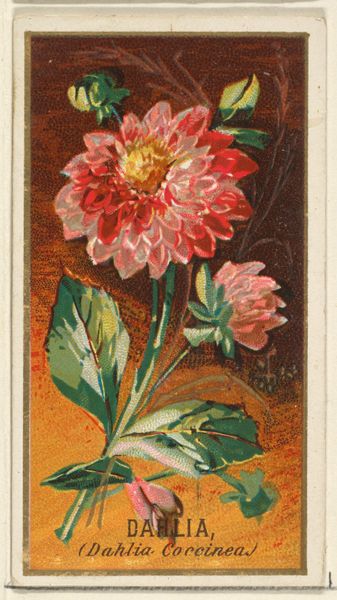
Jack Rose (Rose Jacqueminot), from the Flowers series for Old Judge Cigarettes 1890
0:00
0:00
drawing, print, watercolor
#
drawing
# print
#
impressionism
#
watercolor
#
watercolour illustration
#
botanical art
Dimensions: sheet: 2 3/4 x 1 1/2 in. (7 x 3.8 cm)
Copyright: Public Domain
Curator: Here we have a fascinating piece—a promotional print called "Jack Rose (Rose Jacqueminot)" produced around 1890 by Goodwin & Company as part of a "Flowers" series for Old Judge Cigarettes. The artists employed watercolor and drawing techniques in their rendering. Editor: It has an immediate sentimental effect; almost overwhelmingly romantic, with the lush red blooms dominating the composition. But something feels unsettling. Curator: Unsettling how? Well, these types of trade cards functioned within the context of burgeoning consumer culture and tobacco industry practices in the late 19th century. Mass production of these items helped popularize not just the cigarettes but specific aesthetic trends. Editor: Right, so what feels sentimental to us now served a much more manipulative function then—the objectification of the flower, equating it with fleeting beauty and luxury that mirrors a cigarette's consumable pleasure. Looking at it through a contemporary lens, I wonder about labor practices connected with both tobacco production and the commercial art sphere. Who were the hands involved, and under what conditions? Curator: Those questions are very valid and need attention! We need to also consider how these cards participated in broader patterns of advertising. Botanical illustration, though seemingly innocuous, had specific applications—often used to associate products with notions of purity, nature, and domesticity, appealing directly to a growing consumer base that now had much higher expendable incomes and sought aspirational identities in consumer culture. Editor: And what about the symbolism of the rose itself? It represents love, beauty, and passion. But its image being used for promoting cigarettes is ironic—there's inherent contradiction with this natural beauty advertised alongside a known health hazard. The backdrop isn't a pure representation of nature. I see manipulation in the marketing by associating this idealized symbol to something destructive, that only brings instant ephemeral satisfaction. Curator: Certainly, examining these connections opens pathways into thinking about cultural messaging in general during the industrial revolution and its after effects, which can give context to advertising trends that dominate the market even to this day! Editor: Agreed. Studying its historical context really forces a look into these types of consumer patterns of consumption which impact our lives currently. Curator: Absolutely. This rose trade card then offers not just an aesthetic glimpse, but becomes an aperture through which to look into labor issues, corporate behavior, and cultural desires still relevant today.
Comments
No comments
Be the first to comment and join the conversation on the ultimate creative platform.
